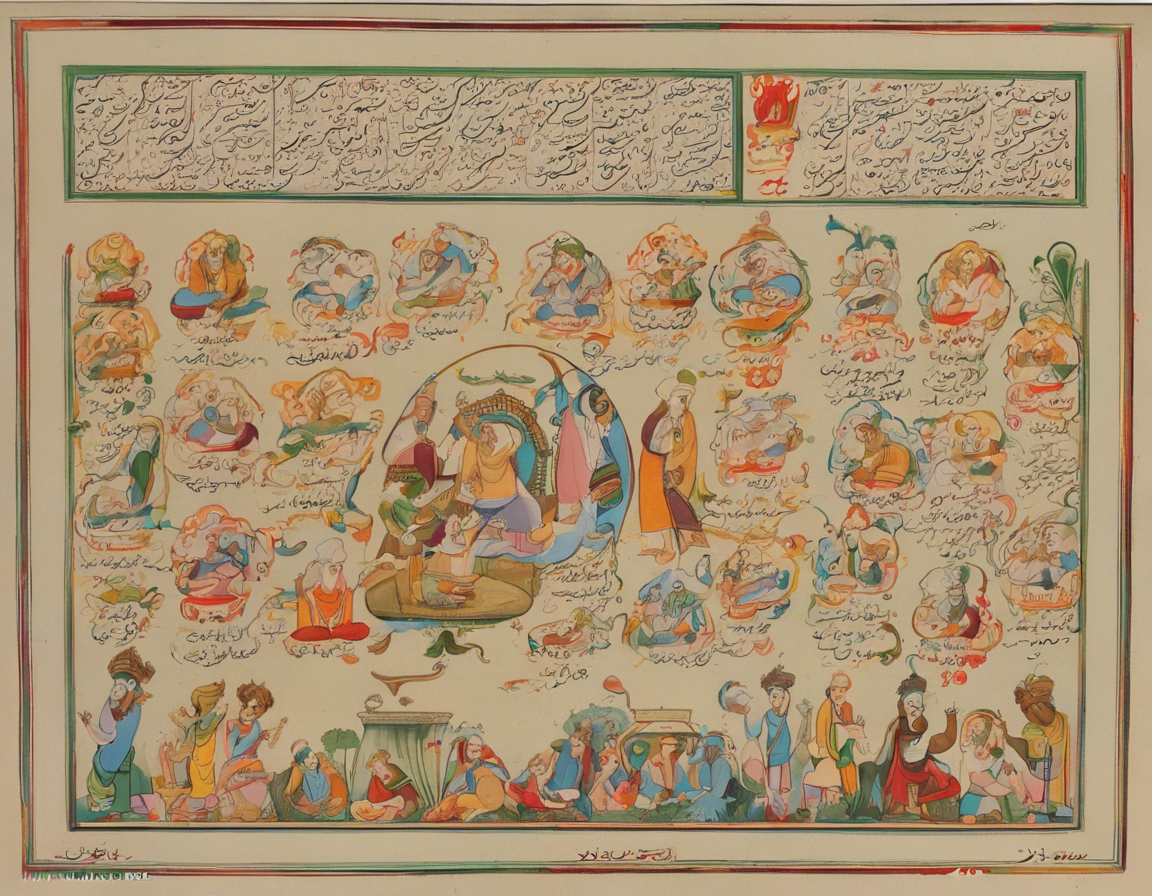Hindi is one of the most widely spoken languages in the world, with over 600 million speakers. It is the official language of India and holds immense cultural significance. One of the key influences on the Hindi language is Farsi, also known as Persian. Farsi has had a profound impact on the development and evolution of Hindi, particularly due to historical interactions between the Persian-speaking Mughal Empire and the Indian subcontinent.
History of Farsi Influence on Hindi
The influence of Farsi on Hindi can be traced back to the 12th century when Persian-speaking invaders from Central Asia, such as the Ghaznavids and Ghurids, began to establish their rule in the Indian subcontinent. However, it was during the Mughal period from the 16th to the 19th centuries that Farsi exerted its greatest influence on Hindi. The Mughal rulers, who were of Turko-Mongol descent but spoke Farsi as their court language, played a significant role in shaping the linguistic landscape of North India.
Linguistic Influence of Farsi on Hindi
-
Vocabulary Enrichment: One of the most significant impacts of Farsi on Hindi is the enrichment of vocabulary. Many words of Persian origin found their way into Hindi, especially in domains such as literature, administration, art, and cuisine. Words like sharbat (drink), ta’aruf (introduction), and bazaar (market) are examples of Persian loanwords in Hindi.
-
Script Influence: Farsi also influenced the script used for writing Hindi. Before the standardization of the Devanagari script, Farsi scripts like Nastaliq and Shahmukhi were used to write Hindi texts. Even today, Urdu, which is closely related to Hindi, is written in the Nastaliq script.
-
Literary Traditions: Farsi literary works and poetic forms, such as the ghazal and nazm, have had a profound impact on Hindi literature. Many Hindi poets have incorporated Persian poetic conventions and meters into their works, creating a rich syncretic tradition.
-
Administrative Terminology: The Mughal administration heavily borrowed administrative terms from Farsi, many of which have become integral to Hindi. Terms like diwan (revenue officer), hakim (ruler), and faqir (ascetic) are examples of Farsi words used in Hindi administrative contexts.
Cultural Influence of Farsi on Hindi
-
Cuisine: Persian culinary influences on North Indian cuisine are evident in dishes like biriyani and kebab. The use of spices, nuts, and dried fruits in Mughlai cuisine reflects the fusion of Persian and Indian culinary traditions.
-
Art and Architecture: Farsi architectural styles, such as the use of domes, arches, and intricate tile work, found their way into Indian architecture during the Mughal period. Monuments like the Taj Mahal and Red Fort bear testimony to this cultural synthesis.
-
Music: The syncretic music tradition of North India, exemplified by classical forms like ghazal and thumri, draws heavily from Farsi poetic and musical influences. The use of Persian poetry in Indian classical music has created a unique fusion of styles.
Modern-Day Relevance of Farsi in Hindi
While the direct influence of Farsi on Hindi has waned over time, many Persian loanwords continue to be used in modern Hindi. Moreover, Urdu, which is a hybrid language with significant Farsi vocabulary, remains closely linked to Hindi and is spoken by millions in India and Pakistan. The enduring legacy of Farsi in shaping the linguistic and cultural landscape of Hindi-speaking regions is a testament to the rich interplay of diverse linguistic traditions.
FAQs:
1. Is Farsi the same as Persian, and are they interchangeable terms?
– Yes, Farsi and Persian refer to the same language. Farsi is the endonym used by native speakers, while Persian is the exonym commonly used in English and other languages.
2. How many Farsi loanwords are there in Hindi?
– It is estimated that there are thousands of Farsi loanwords in Hindi, particularly in domains such as literature, administration, and cuisine.
3. Are there differences between Urdu and Hindi in terms of Farsi influence?
– Urdu, being a hybrid language with significant Persian vocabulary, has a higher degree of Farsi influence compared to Hindi. However, both languages share many Persian loanwords.
4. Can Hindi speakers easily understand Farsi, and vice versa?
– While Hindi and Farsi belong to different language families (Indo-Aryan and Indo-Iranian, respectively), there are some lexical similarities due to historical interactions. Basic communication may be possible for speakers of both languages.
5. How can one learn more about the Farsi influence on Hindi literature?
– Studying the works of renowned Hindi poets like Mirza Ghalib and Mir Taqi Mir, who integrated Persian literary conventions into their writing, is a good starting point to explore the Farsi influence on Hindi literature.
In conclusion, the influence of Farsi on Hindi is a testament to the cultural and linguistic interactions that have shaped the Indian subcontinent over centuries. The rich tapestry of Persian loanwords, literary traditions, and artistic syncretism in Hindi highlights the enduring legacy of this historical connection. As Hindi continues to evolve and adapt to contemporary contexts, the resonance of Farsi in its linguistic and cultural fabric serves as a reminder of the depth of India’s multicultural heritage.
